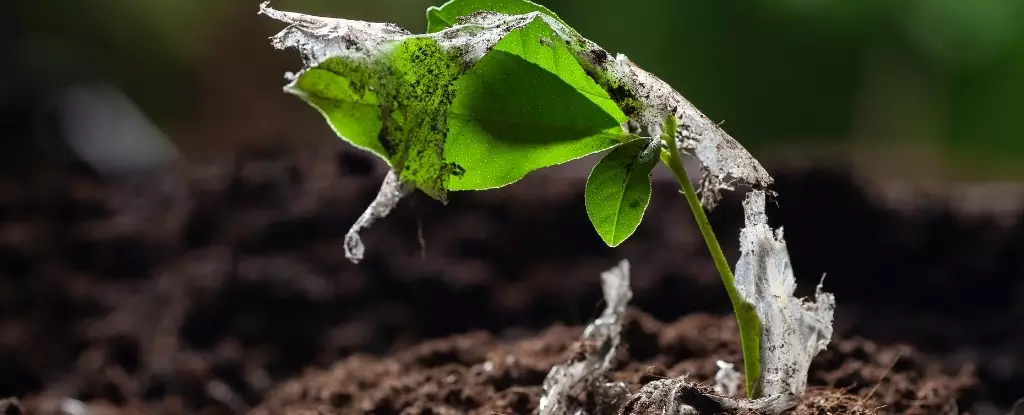In an era where environmental awareness has surged, the insidious infiltration of microplastics into our agriculture reflects a malign neglect of both our planet and public health. Tiny plastic particles, once dismissed as a mere nuisance, have permeated our soils and, in concert with hazardous additives, threaten the very foundation of our food systems. Recent research conducted by environmental biotechnologist Joseph Boctor and his team highlights a grim reality: our culinary staples—lettuce, carrots, and wheat—are unwitting carriers of these environmental contaminants. This discovery raises urgent questions about the growing practices that contribute to this persistent problem, while simultaneously prompting us to ask who is accountable for the safeguarding of our health and environment.
The Scale of the Problem
Shockingly, it has been estimated that both Europe and North America collectively contribute hundreds of thousands of tonnes of microplastics to agricultural soils every year. These figures sound alarm bells about the potency of human activity in dismantling natural ecosystems. In the UK alone, it is reported that around 22,500 tonnes of microplastics infiltrate the earth through fertilizers and agricultural enhancements annually. This deluge of contamination necessitates our immediate examination of traditional agricultural techniques, especially plastic mulch, which has gained popularity under the guise of efficiency and yield improvement.
Plastic mulch blankets soils to deter weeds and optimize moisture levels, thus enticing farmers with the promise of higher productivity. However, the irony is striking—the very tools marketed for increasing our agricultural output are simultaneously sowing the seeds of our demise. The data-driven evidence reveals that agricultural methods adorned with plastic components are unambiguously among the primary culprits responsible for the microplastic crisis. As we continue to embrace short-term yields without consideration for long-term health, we may be heading toward a catastrophic breach between productivity and sustainability.
The Path to Our Plates
The mechanics of how these microplastics penetrate our food supply are both fascinating and unsettling. Plants can absorb these particles through their roots—a process known as endocytosis—or by inhaling them through their leaves. Fruits and vegetables, which we often perceive as wholesome, are now repositories for unseen toxins. The implications of this are profound, as the food we consume becomes an extension of an environmental disaster. The transition from soil to plant, and eventually to our plates, represents a troubling chain of contamination that must be critically scrutinized.
Biotechnologist Boctor voices a significant concern about the limited transparency surrounding this issue. While agriculture has long been entwined with natural cycles, the introduction of synthetic elements like microplastics and their associated additives brings a chaotic variable into the equation. Evidence suggests that these micro-sized invaders bear the potential to disrupt human reproductive health, provoke hormonal imbalances, and even inflict lasting genetic damage. This is a clarion call for action that transcends mere discussion—it is a moral imperative to take a stand against the unchecked corporate practices that perpetuate this crisis.
Rethinking the Agricultural Paradigm
In a rational society, policymakers ought to confront this disquieting reality. Yet, there remains a palpable lag in legislative response to the microplastic crisis. As researchers shine a light on the dangers that lurk silently in our soils, we must question why our regulatory frameworks are so inadequately equipped to tackle these emerging threats. The lack of urgent responsiveness leaves public health in precarious balance, hinting at a reluctance by authorities to challenge the profitability of plastic-derived solutions.
The gravity of these findings brings us to a crossroads. An unfettered embrace of plastic solutions has potentially grave repercussions that will extend beyond economic losses—touching every life across our global community. The increasing acceptance of microplastics in agriculture is a testament to our failure to innovate sustainably. As we forge ahead, an imperative arises to reshape agricultural practices, prioritizing natural and organic methods while holding corporations accountable for their role in this unfolding tragedy.
In closing, our call to arms must center around a shared vision of a plastic-free future. By empowering farmers with sustainable alternatives and technology that does not compromise our health or the environment, we can redirect the narrative from agricultural expediency to one that honors ecological integrity and human well-being. The time for change is now, and it is essential that we rise to the challenge.

Leave a Reply